I had the great fortune of meeting the Göteborg-based illustrator Joakim Hanner within days of moving to Sweden. When he and his girlfriend regaled me with their attempt to decompose and disinfect a moose head so they could put it on their wall, I was smitten: here were some people on my level.
In addition to being a consummate storyteller, Joakim can also draw — like really draw. This ace combination of skills has led him deep into the world of comic books, as both a reader and now an author himself. His first comic, Kelippot: Mörkret på Svalbard (Darkness on Svalbard), the kick-off of an entire series, is due out soon.**
In this delightful Q&A over beers at my kitchen table, Joakim brought me up to speed on the artform today and its growing multiplicity of genres. He also explains his evolution from a kid drawing turtles to the full-blown illustrator and Art Director he is today.
So, Joakim. You draw stuff…
I do! I do. I always draw. I can’t remember when I didn’t draw. When other kids stopped, around 4 or 5, I just kept doing it. I guess that’s the story with everyone who’s still drawing in adult age.
You remember what you were drawing as a little kid?
Yeah… it was a lot of, like, Ghostbusters — a lot of those. And turtles, a lot of turtles. A lot of big, big drawings of turtles. I don’t know what the format is in the States but in Sweden we have the A1, A2, A4… The traditional papers are A4. A1 is huge, and I remember in preschool I used to use a whole one for each turtle. And I just keep doing it. I still draw turtles, sometimes. And ghosts, a lot of ghosts…
What did they look like when you first started drawing them?
I think they were pretty traditional.
Like the white sheet over the head?
Yeah yeah exactly, because it was easy to do, but then, pretty early on, I started playing role playing games like Dungeons and Dragons. So I started to draw more elaborate stuff… people with swords, dragons, orcs…
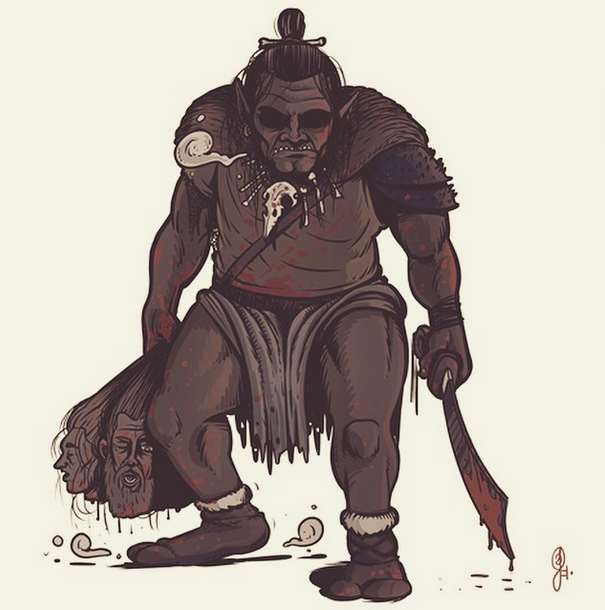
Do you draw ghosts now?
Not so much ghosts, now. I would like to draw more ghosts, but usually it’s monsters. When I draw comics, it’s mostly comics inspired by something, like one of H.P. Lovecraft’s stories. You know, different kinds of monsters.
Is there any particular monster you keep returning to?
Yeah, I worked a couple years ago and I still do — when I have spare time in my head — on a big, epic fantasy comic which features a type of monster that consumes the flesh, that alters the flesh. They look like a morbid version of alien monsters… not so elegant. So I keep returning to that kind of monster. But I don’t really have a name for it. I keep on changing some small things about it.
So with your comic book that you recently completed — can you give me an overview of what the tale is?
The story is called Kelippot. And Kelippot is in dark Judaism — the Kabbalah — the tree of death. There is a tree of life that’s in the garden of Eden and there’s a tree of death. I used that to inspire the plot. So [the story goes] scientists have discovered a strange tree on Svalbard. Since they can’t do any experiments, because this is early early in the scientist days, a group of them is sent to investigate this tree. Almost all of the scientists know about the tree, but they haven’t seen it yet or they haven’t seen it in a couple years. So all the scientists gather there, and once everyone is gathered, strange things start to happen, of course.
From the beginning, they think maybe this is the tree of Yggdrasil, they don’t really know themselves. And you never find out in the comic that this is the Kelippot tree. But this is the first comic of a lot of comics. It’s the start of the world. The kick-off!
How many pages is it?
It’s 30 pages. That’s a longer comic book story. If you read American comics, they use pretty big frames and big panels so you don’t have the time to tell so much on each page. I used the more European style with smaller frames just so I could get more said and done with every page. I tried more of the French or Belgian way, but still the American story structure.
Can you tell me more about comic book culture today? When I think about comics, I think about Superman, and you know, the originals. So could you update me a bit, give a general picture of what the artform is like today?
You still have the giants, like you have Marvel and you have DC and superhero comics that are still big on the market, that a lot of people read. And now there’s been an upswing in the demand for those kinds of comics since these days it’s cool to be a nerd. It’s considered pretty hipster or cool to be talking about, like, who could lift Thor’s hammer. So that’s a thing going on, but it’s pretty easy to collect that information. There are so many comics being printed by publishers like Marvel, and they’re being consumed so much that people aren’t really reading the stories. So when they’re writing these comics, they’re not even trying to say something. That’s the feeling I get from Marvel comics.
So the giant stuff is still there. And then there are indie comics, like Vertigo, like Sandman. They’re a kind of grown-up comics trying to be deep and substantive, or darker. And you have the indie comics–like Ghost World where everything’s like face-to-face conversation–which try to do something else with the comics. It doesn’t have to be about superheroes or the traditional genres.
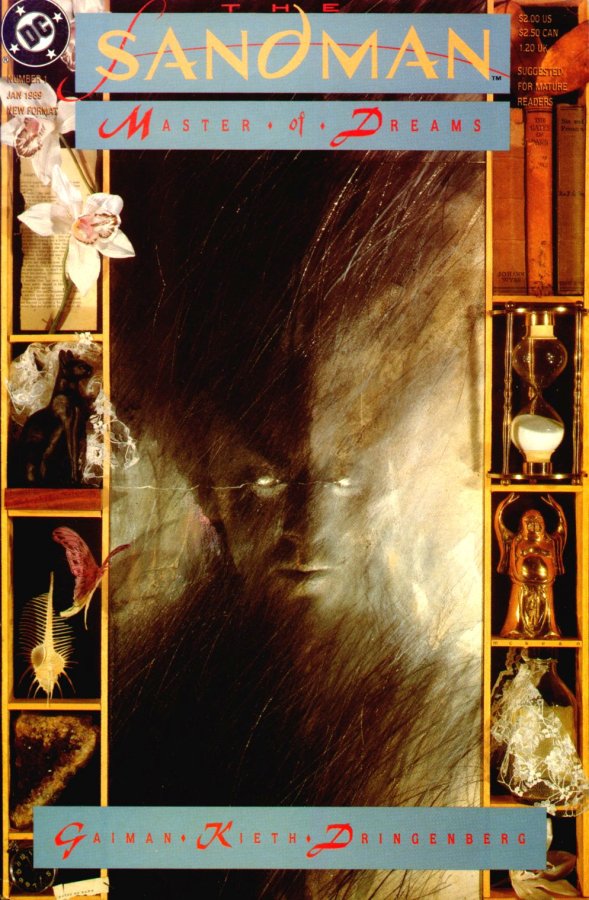
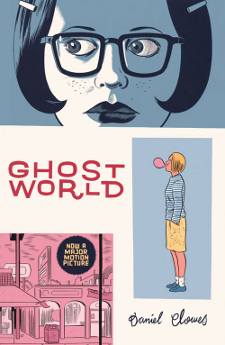
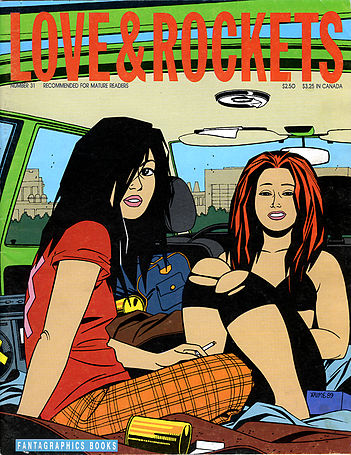
So the medium can be used to tell any kind of story?
Yeah, there’s a lot of it. Love and Rockets is one of the biggest indie comics. It’s three American brothers who draw it. It’s been going on forever, and it’s just characters. Like the plot is pretty vague, you just follow these characters living their lives; you get to be a part of their normal day-to-day life.
And what’s the comic book scene like in Sweden?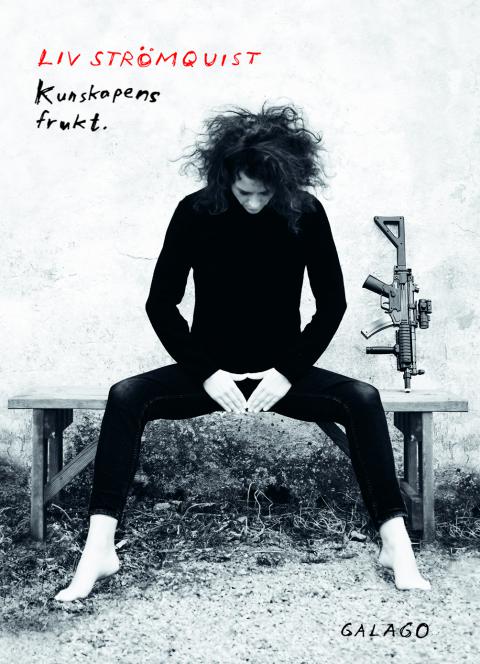
Now in Sweden, comics have started to be popular, or more respected. There are a lot of people who work in media and people who work with culture who are releasing their own comics that are very, very political. They talk about feminism, for instance.There’s one comic that’s only about girls’ period — they talk about the history, how its judged, stuff like that. It’s a very big feminist statement. [These comics] have started to gain a lot of ground in Sweden, and have won a lot of culture prizes. And they’re awesome. Last year, Sweden’s most famous comic book was by Liv Strömquist, Kunskapens frukt. I haven’t read it yet, but in it I think she talks about “skuld” – guilt you are born with, as a woman. Her books are very very good.
So that’s going on right now, but I have also seen a lot of Swedish comic book authors write more about escapism. They’re doing more fantasy, more horror. And they’re starting to give out their own stuff, their own material. They don’t go to publishers anymore because there’s so little money in comics. So instead of getting little pay and having to listen to someone telling you what to do, you do exactly what you want, like “fuck it.”
Are you planning to go the self-publishing route?
Right now I’m in limbo because the publicist who was supposed to publish my comic went bankrupt. So right now I’m thinking of giving it out myself. I am looking at actual printing places.
Do comic books necessarily have to be in print or can they be online?
There are a lot of online comics. I like the online comic format. When you release yourself from the page, when you start doing comics for the web from the beginning, it becomes something else. And I like that. I really enjoy reading a good comic book, holding it in my hands, but if you do something directly for the web, it’s pretty awesome… you can do gif animation, stuff like that. Then you have to draw a lot more than you already do.
What online comics do you frequent?
I read a comic called Table Titans, which is a cool mix of the indie way of doing comics and traditional fantasy comics. There is a group of young guys playing role-playing games. You can follow their life around, but then when they play, you can jump into that world and read about their adventures as barbarians or whatever.
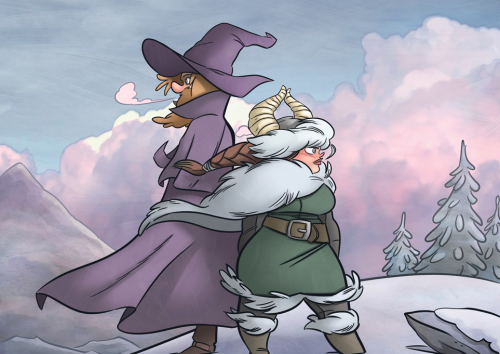 Whoa cool, so it’s like a double layer?
Whoa cool, so it’s like a double layer?
Yeah, like they go to each others’ places and sit down, and in the next panel they are in the forest and they have weapons. So it’s a cool mix. It’s also pretty innocent the way they draw. It’s very comic-y, like cartoonish – it’s very, very cute. Also, for me as an old role playing nerd it’s pretty nostalgic. Since everything is “Dungeons and Dragons” — I like that.
Totally. To elaborate on that point – how do you make the decision in terms of visuals (i.e. more cartoonish or more articulated, more modern)?
The story decides. Always. For me when I write a story, I adapt it to my own style. I have written stories that are too much horror, like real horror, that I can’t draw. My style doesn’t fit with it. So either I can sell the script and have someone else draw it or I write it so it matches my style and I can draw it. So it’s either way.
I’ve seen some comics where you can tell where they tried to aim with the drawings and it doesn’t really get there… that’s a big turn-off. But then again, I mean, I’ve seen people who draw really cartoony, really childish, but they tell stories that are more action or more horror or something that doesn’t fit them and it works perfectly. So there’s no big rule that says you have to do it that way or this way, but at the end of the day, I always think of the story. If you want to tell a good horror story you should choose [the more articulated form].
Do you find that part of your impetus for creating a comic yourself is to give back to the comic book community?
I’m not sure, it’s not that I see it as a community because I don’t actually hang out with too many other people that draw comics right now. I’m not so connected to that world anymore.
It’s more like, as soon as I do something and I find it interesting, I just start doing it myself. When I play a good video game, I immediately start to think about what I could possibly do in terms of writing scripts for video games. Or when I listen to a lot of good music I want to start my own band. The problem is…
Too many things!
Yes. And I always chose comics and I always chose drawing because that’s something I had control over.
When did you realize you could make a living by being a creative person?
I reached a tipping point when I just decided, “fuck it, I’m going to do this.” I was like 21, 22 and I had been working for a couple years and I didn’t really know what I was doing. I was working at a retirement home and I was like “should I do this?” “Should I be a nurse?” I didn’t really know what I wanted to do.
One day I called up my friend from the military (you know how in Sweden it’s mandatory to do military service), just to talk about something, I don’t even remember what, but we both loved comics. And he told me “yeah I’m studying comics up in Sweden.” And I was just like… “I’m going to do it.”
Then and there I just decided that if I want to do something with my life I am going to do something that I enjoy.
That’s the reason I started with the ad agency as well. I studied to become an art director so I could get more illustration work to get better at drawing so I could draw more comics. That’s the beginning of why I started the company as well.
What’s your company’s name?
Fully Flared.
Wiicked. Can you give me a picture of what the early, early days of Fully Flared were like?
That was like 4 years ago. I remember that Petter 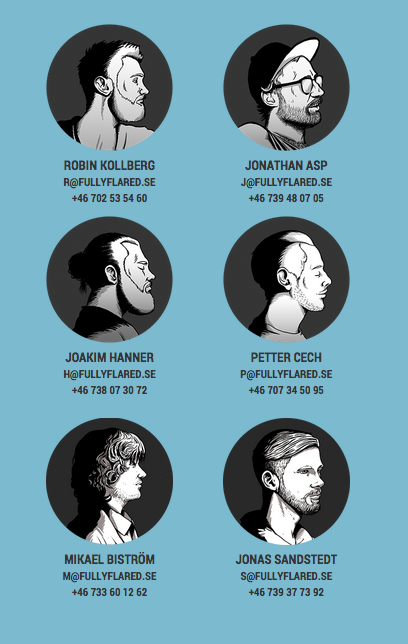 and Jonathan were producing banners for online ad agencies in Gothenburg. And then me and Robin—he’s a copywriter—we all kind of joined together. We were sitting in a big office that we shared with other companies and we just started it from there.
and Jonathan were producing banners for online ad agencies in Gothenburg. And then me and Robin—he’s a copywriter—we all kind of joined together. We were sitting in a big office that we shared with other companies and we just started it from there.
Do you specific directions you’d like to go in? If things are going amazingly well, what would things look like in two years?
Hmm, in two years, that would be if we landed a big client and we had to hire a lot of people. And I would be really working as an art director and have so much time that I could actually draw comics in my spare time.
At the end of the day, I have my personal goal: in 15 years, I’d like to be able to live off my pen.
So coming back full circle, do you still have any of those huge turtle drawings from back in the day?
No actually!
Whhhaaatt noooo, really?
When I’ve done something, when I’m finished with something, I don’t have any relation to it anymore. For me, it’s only doing it that’s the fun part. Going back and looking at it again, I almost never do that. I never go back and look.
~ The End ~
Well that was awesome, no? Want more still? Follow Joakim’s work on Instagram @joakimhanner and/or on Joakim’s tumblr. You can also give him a shout on his facebook page.
**Update! Since this Q & A was recorded, a few initial copies of Kelippot: Mörkret på Svalbard have been printed. See an insta video of some page flips here. Want your own copy? You’ll be able to order one from kelippot.se later this month. To stay updated, “like” Joakim’s fb page.